Vietnamese tourists and a group of friends spent 17 days wandering around Iran, where thousands of years old structures of ancient Persia are still preserved.
Ms. Nguyen Bich Ngoc, living in Hanoi, explored Iran with a group of friends in early May, spending 40 million VND per person, including 18 million VND for airfare, 2 million VND for visa application fee, the rest for accommodation, food, car rental and local tour guide.
A month before the trip, she applied for a visa "quickly and easily". She filled out the information on the website https://evisa.mfa.ir/en/, interviewed online with the Embassy, and only had to pay the fee after 10-15 days of receiving the results. When filling out the information, select the Place of Issue (where to submit the hard copy and pay the fee) as the Iranian Embassy in Hanoi , the fee is 80 euros, if you choose to submit at the airport in Iran, it will cost 100 euros. Ms. Ngoc shared that she should submit at the Hanoi Embassy because "the cost is lower and there are fewer risks", and if she encounters any problems, the staff will directly support her.
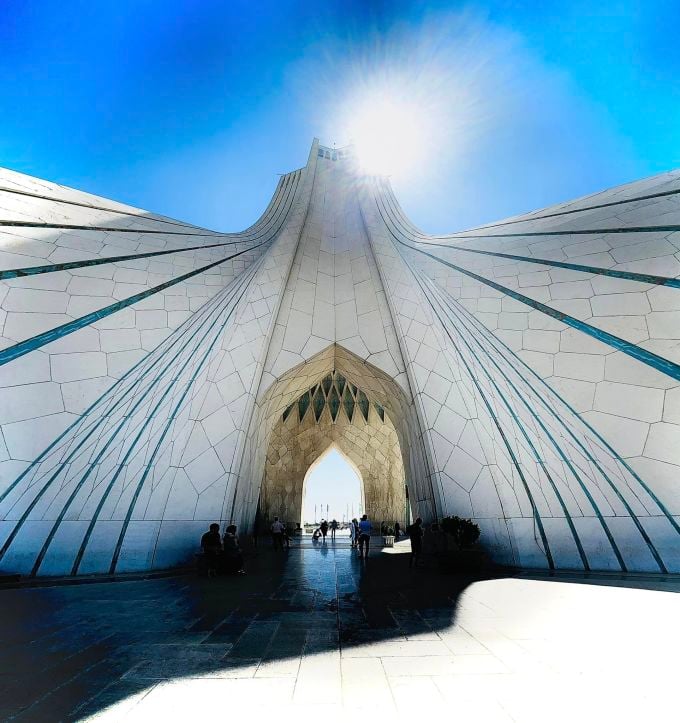
Azadi Tower or Freedom Tower, located at the entrance to the capital Tehran, was built in 1971 to commemorate the 2,500th anniversary of the birth of the Persian Empire.
Regarding airfare, Ms. Ngoc's group flew Hanoi - Kuala Lumpur - Shiraz - Tehran - Hanoi. Currently, there are no flights from Vietnam to Iranian cities, so they have to transit at an intermediate point. Besides Kuala Lumpur, they can choose to transit in Bangkok or Dubai. After surveying ticket prices, Ms. Ngoc's group chose Kuala Lumpur because it was the most cost-effective.
Ngoc's trip planning process took longer than other foreign trips because official information about Iran tourism was "little and difficult to find on the Internet." Her group had to contact local friends for support and choose a semi-independent form of travel. The group applied for a visa themselves, then booked a land tour (local tour) with a tour guide and rented a car with a driver for the entire trip.
They rented a 30-seat car and took a road trip of more than 1,800 km through 17 locations in Iran in half a month. The cost of renting a car was 140 USD per day, not including gas. The main route went through 6 major cities including Tehran, Kashan, Isfahan, Yard, Shiraz and Tabriz. The group spent most of their time in southern Iran because this place is home to many thousand-year-old architectural works and historical relics. Tabriz, the capital of Eastern Azerbaijan Province, was the only destination in northwestern Iran.
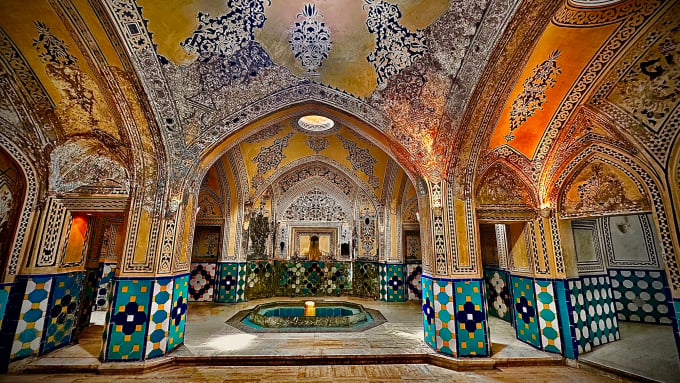
Public baths in Shiraz, built during the reign of Karim Khan Zand (1751 - 1779).
When arriving in each city, the group hired a local tour guide because it was their first time in Iran and they wanted to learn more about the history and culture of the ancient Persian Empire. Internet access in this country is limited due to the embargo. Locals hardly speak English. The writing and number systems are separate. The tour guides are fluent in foreign languages and take care of everything for the group throughout the trip. They just do not interfere with tourists bargaining and settling prices when buying and selling.
"The reality of Iran is far different from what I read and learned online about a country that has been under embargo for more than 40 years. This country still retains the breath of the Persian Empire. Thousands of years old structures such as Nasir al-Mulk Mosque, Persepolis ruins in Shiraz, Naghsh-e Jahan Square in Isfahan, Ateshkadeh Zoroastrian temple in Yazd or the ancient village of Abyaneh seem to take me into the stories of the 1001 nights," said Ms. Ngoc.
In addition to learning about architecture, culture, and religion, the group of tourists also enjoyed the beautiful natural scenery along the drive, such as the Maharloo pink salt lake, the Maranjab desert, or the road from Kashan to Anyaneh.
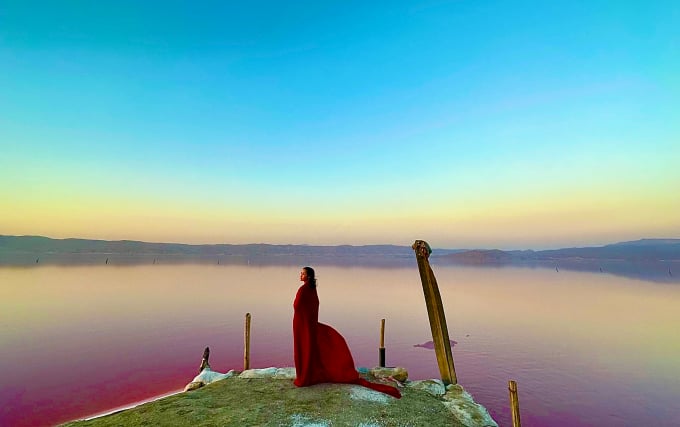
Natural pink salt lake in Shiraz city, capital of Fars province, southwestern Iran.
Ngoc still remembers clearly the sunset afternoon on the vast Maranjab desert. After riding nearly 250 km from Tehran to Kashan, it started to rain heavily. The group had already decided to "reluctantly cancel" the 60 km motorbike ride from Kashan to the Maranjab desert. Sitting in the car until the rain stopped, a rainbow appeared on the giant sand dunes. In the midst of that scene, the group stopped to boil water to make tea, listen to music and enjoy the late afternoon in the desert.
During their trip, they stayed in boutique hotels that had been converted from traditional local houses. These houses were often meticulously designed down to the smallest detail and decorated with colorful patterns. Due to the embargo, they could not find accommodation on popular sites like Booking or Agoda. Instead, they searched on Exotigo, a site that specializes in providing information on accommodation in Iran. After finding a room, they gave the information to the tour guide to double-check before booking.
Ms. Ngoc found the price of hotel and food in Iran in early May quite cheap. Each person spent about 40 USD a day, including staying at a 4-star hotel and eating at a restaurant. The price is for a group of 10 people.
Due to the embargo, Iran only uses domestic cards, not international payment cards, so tourists are forced to exchange and spend cash. The official currency of Iran is the Iranian Rial (1 Rial = 0.6 VND). In addition, they also use Toman (1 Toman = 10 Rial) and buy and sell more in Toman. Tourists should exchange money to USD or Euro before flying and exchange it to Iranian currency after arriving, at shops or on the street.
"The local currency is losing value, so when you bring dollars or euros, you can exchange them for bags of local rials and literally spend money by the book," she said. The exchange rate changes constantly, by the hour or day, and you can bargain. At the beginning of May, $1 was equivalent to 500,000 rials.
Ms. Ngoc said that most social networking applications such as Facebook, Zalo or international applications are blocked in Iran, need to install VPN to access. Tourists need to buy SIM cards at the airport counter, use passport to register SIM cards under their ownership. Internet speed in Iran is not high and many wifi places limit the number of devices logged in.
"I couldn't post hot photos on the go this time because the internet was unstable. While in Iran, my friends and relatives texted me to ask how I was doing, but the communication was often interrupted," Ngoc said.
Iranian cuisine is also criticized by many people as "difficult to eat" because of the limited choices, mainly grilled chicken and lamb, marinated with strong-smelling herbs. However, Ms. Ngoc "loves" lamb. Lamb is processed to completely remove the bad smell and is grilled or stewed. The meat is tender and the spices have a fragrant scent of saffron.
After more than half a month of wandering in Iran, Ms. Ngoc still wants to return to the land of a thousand and one nights many more times to explore more deeply the culture and history here.
Bich Phuong
Photo: NVCC
Source link







![[Photo] Hanoi morning of October 1: Prolonged flooding, people wade to work](https://vphoto.vietnam.vn/thumb/1200x675/vietnam/resource/IMAGE/2025/10/1/189be28938e3493fa26b2938efa2059e)


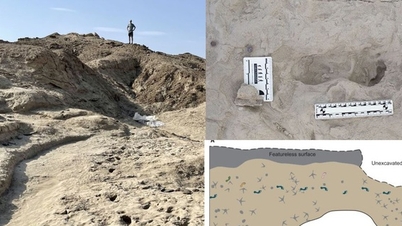




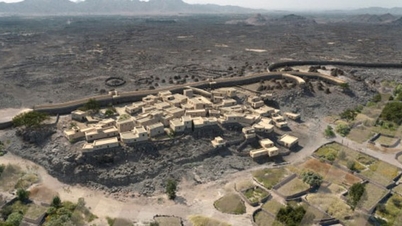

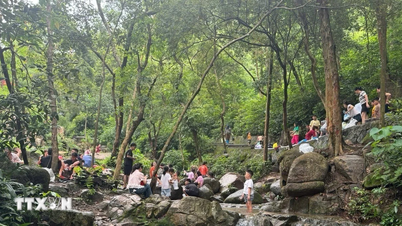






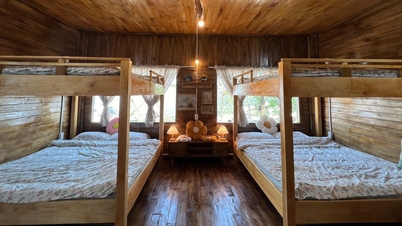
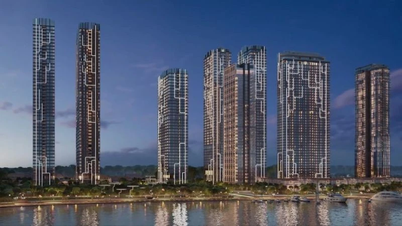










![[Photo] The 1st Congress of Phu Tho Provincial Party Committee, term 2025-2030](https://vphoto.vietnam.vn/thumb/1200x675/vietnam/resource/IMAGE/2025/9/30/1507da06216649bba8a1ce6251816820)
![[Photo] President Luong Cuong receives President of the Cuban National Assembly Esteban Lazo Hernandez](https://vphoto.vietnam.vn/thumb/1200x675/vietnam/resource/IMAGE/2025/9/30/4d38932911c24f6ea1936252bd5427fa)
![[Photo] Panorama of the cable-stayed bridge, the final bottleneck of the Ben Luc-Long Thanh expressway](https://vphoto.vietnam.vn/thumb/1200x675/vietnam/resource/IMAGE/2025/9/30/391fdf21025541d6b2f092e49a17243f)






















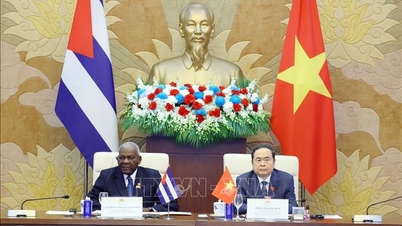











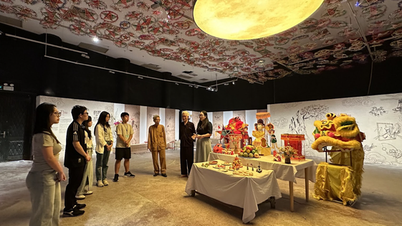

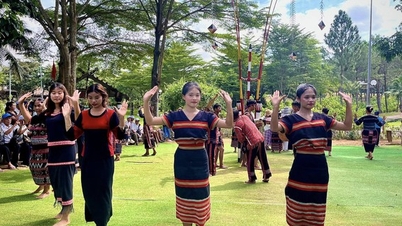
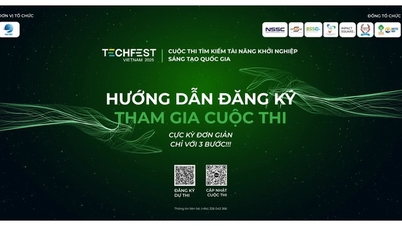

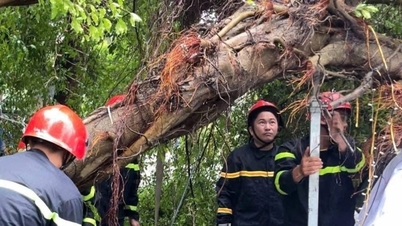



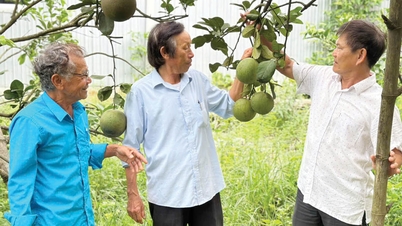

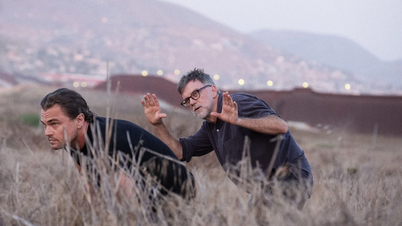

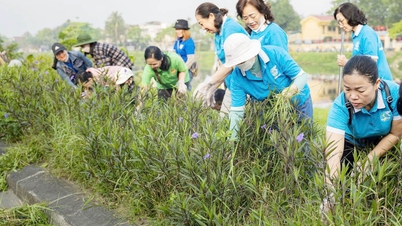
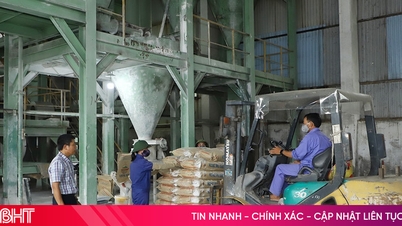














Comment (0)